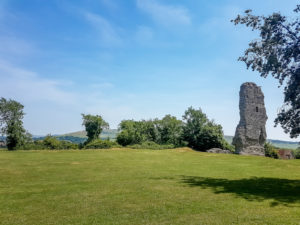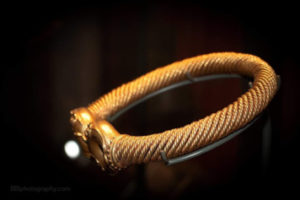Conisbrough Castle is a medieval fortification in Conisbrough, South Yorkshire, England. The castle was initially built in the 11th century by William de Warenne, the Earl of Surrey, after the Norman conquest of England in 1066. Hamelin Plantagenet, the illegitimate, parvenu brother of Henry II, acquired the property by marriage in the late 12th century. Hamelin and his son William rebuilt the castle in stone, including its prominent 28-meter high keep. The castle remained in the family line into the 14th century, despite being seized several times by the Crown. The fortification was then given to Edmund of Langley, passing back into royal ownership in 1461.
11th – 12th centuries
Conisbrough Castle was founded by William de Warenne, the first Earl of Surrey, who had taken part in the Norman conquest of England in 1066 and was rewarded by his father-in-law, William the Conqueror, with extensive estates in Yorkshire, Norfolk, and Sussex. As part of these, Lord de Warenne was given the manor of Conisbrough, which had previously been owned by the late Harold Godwinson. The manor took its name from the Anglo-Saxon name for the settlement, Cyningesburh, meaning “the king’s fortress”, and formed a large estate comprising 28 townships, centered on an Anglo-Saxon fortified burh at Conisbrough itself.
William built his castle on a rocky Magnesian Limestone spur surrounded by steep banks, and the fortification included a motte, an inner bailey protected by an earth bank and palisades, an outer bailey, and possibly a timber keep. The castle was located around 175 feet above the river and would have dominated this part of the Don Valley. It was positioned directly opposite the village, which probably contained the old Anglo-Saxon burh.
The castle was held by William’s son, also called William, from 1088 to 1138, and then by his son, another William, until his death in 1147. Conisbrough and the earldom then passed through Isabel, William’s daughter, to her first husband, William de Blois, and then on to her second husband, Hamelin Plantagenet, whom she married in 1163. Hamelin was the illegitimate half-brother of King Henry II, who had arranged the marriage, and the union brought him great wealth. Hamelin extensively rebuilt the castle around 1180 to 1190, including constructing the stone keep; given his parvenu status, he probably hoped to reinforce perceptions of his new elevated rank. King John visited the castle in 1201.
13th – 15th centuries
The castle continued in the ownership of Hamelin Plantagenet’s family, passing to his son William de Warenne in 1202. William was probably responsible for the construction of new stone curtain walls around the inner bailey, destroying the former earthwork defenses in the process. The inner bailey was leveled and William built a hall and service buildings inside the castle, again in stone. Conisbrough was inherited by William’s young son John de Warenne in 1239, but he was still a minor and the castle was initially managed by his mother, Maud.
Under John, Conisbrough’s constables carried out a range of what the historian Stephen Johnson terms “colorful if rather unlawful dealings”; one was ultimately charged with having conducted “devilish and innumerable oppressions”. Further work was carried out in the castle during John’s ownership, including modernizing the castle hall and solar.
The castle passed to John’s grandson, also called John, who, in 1304, married Joan de Barr. The marriage broke down but John’s attempts to gain a divorce in 1316 failed in the law courts. John blamed Thomas, the Earl of Lancaster, for this, and in response, he kidnapped Thomas’ wife; Thomas then retaliated by seizing Conisbrough Castle. Edward II intervened in the dispute and confirmed Thomas as the new owner of the castle. In 1322, however, Thomas rebelled against the King and was executed, resulting in Edward taking control of Conisbrough himself. The King visited the castle in 1322 and spent 40 marks on repairing both Conisbrough and the neighboring castle of Pontefract. Edward was overthrown by his wife Isabella in 1326 and the castle was returned to John. John had hoped to pass the property to his mistress and two illegitimate sons, but he outlived them and on his death in 1347 it reverted to the control of the Crown.
Edward III gave the castle to his own son, Edmund of Langley, the Duke of York, who controlled it until 1402.] Edmund’s eldest son, Edward, owned it until 1415 when it passed to Maud Clifford, the widow of Edmund’s younger son Richard, who lived there until 1446. Richard of York then inherited the castle, and on his death in 1460 during the Wars of the Roses, it passed to his son Edward, who seized the throne in 1461, bringing Conisbrough back into Crown ownership once again.







